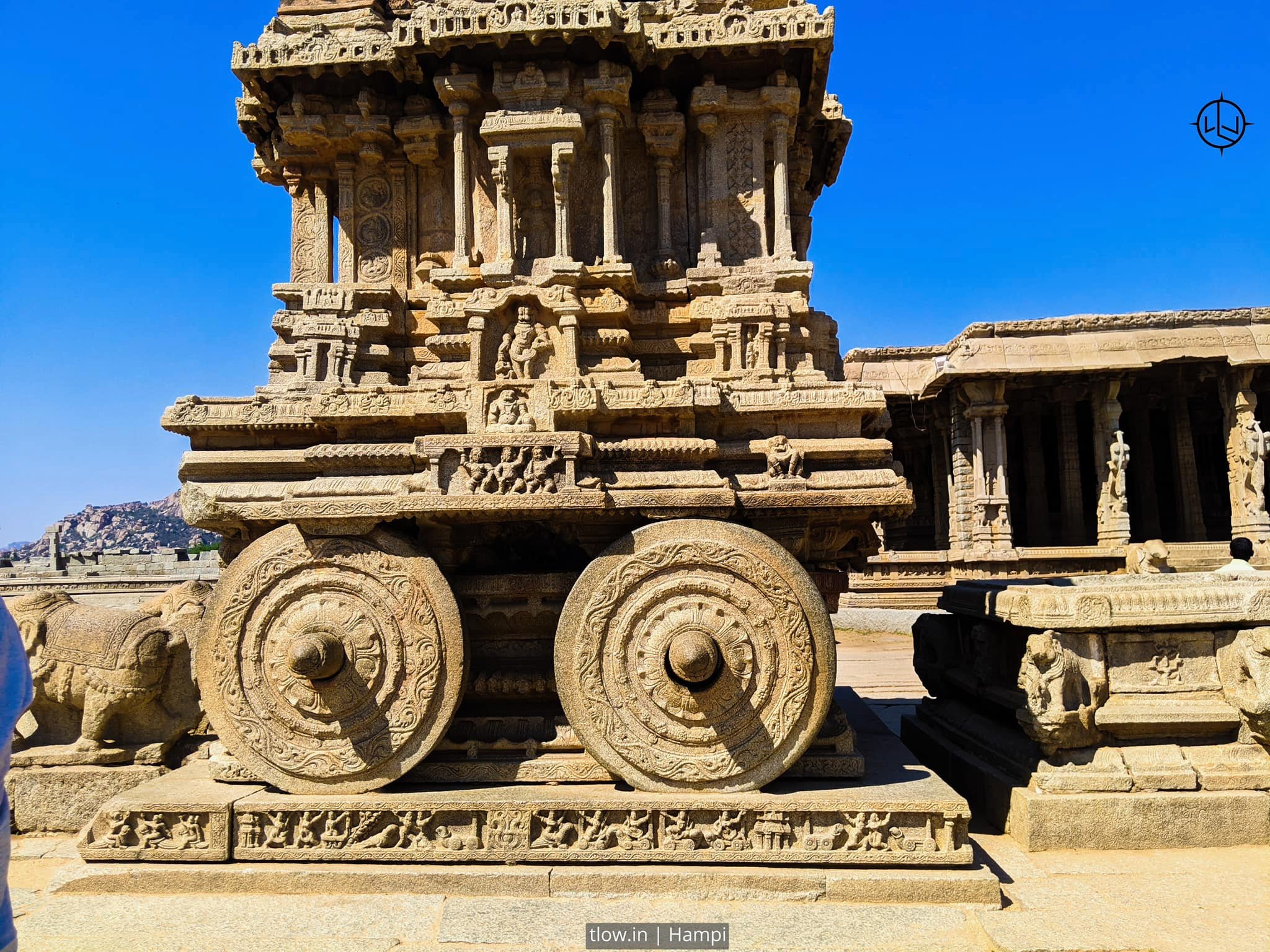
Vittala Temple in Hampi: 7 intriguing History points
The Vittala Temple is one of the most iconic and significant temples in Hampi, India. It dates back to the 15th century and has a rich history associated with the Vijayanagara Empire.
The temple is known for its exquisite architecture, intricate carvings, and musical pillars. It was built during the 15th-16th century under the patronage of the Vijayanagara Empire.
For the TLOW backpacking experience click on this link
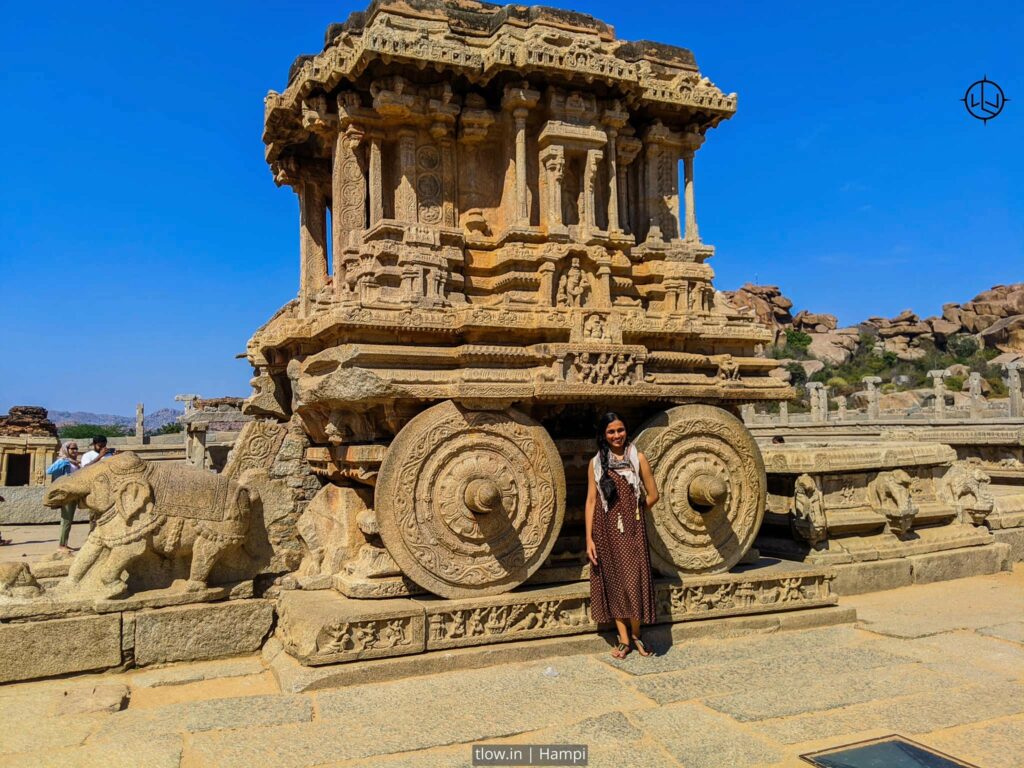
One of the main attractions of the Temple is the iconic Stone Chariot, which is sculpted out of a single block of granite and is considered a symbol of Hampi. The chariot is intricately carved and resembles a temple chariot with wheels and horses.
Visitors to the Vittala Temple can also witness the stunning Vijayanagara-style architecture, including well-preserved wall carvings, sculptures, and the famous giant mandapa (hall).
The temple attracts a large number of tourists and devotees every year who come to admire its architectural beauty and seek blessings from Lord Vittala. The Vittala Temple is not only a religious site but also a historical and cultural landmark in Hampi.
Table of Contents
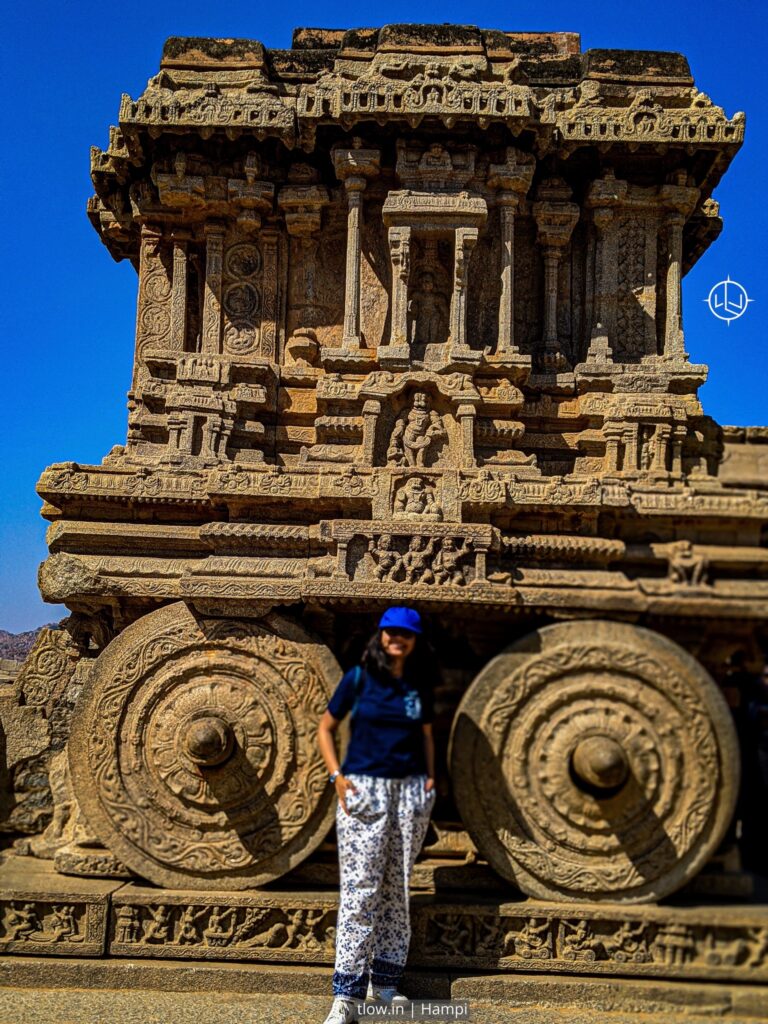
The temple also has a famous Hall of Dance, known as the Ranga Mantapa, which has numerous carved pillars that produce musical sounds when struck. The structure is also adorned with detailed carvings depicting various mythological scenes and stories.
Here is a brief overview of the temple’s history:
1. Construction:
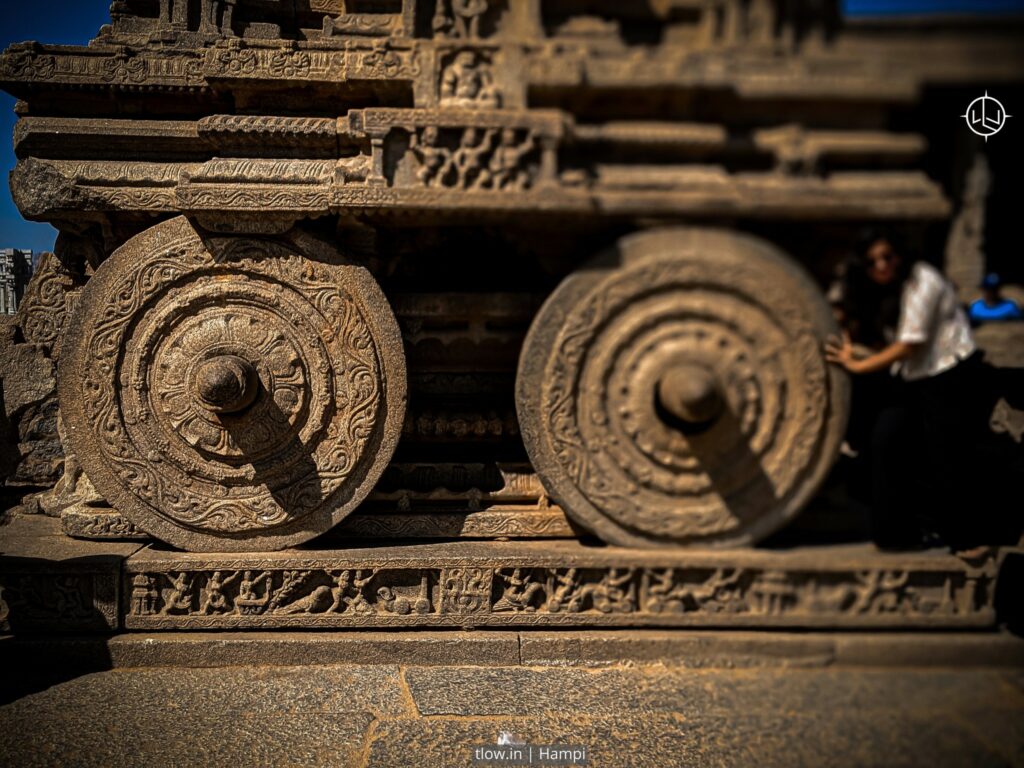
The construction of the Vittala Temple began during the reign of King Devaraya II of the Vijayanagara Empire, around the mid-15th century. It was later expanded and enhanced by subsequent rulers, including Krishnadevaraya.
2. Dedicated to Lord Vittala:
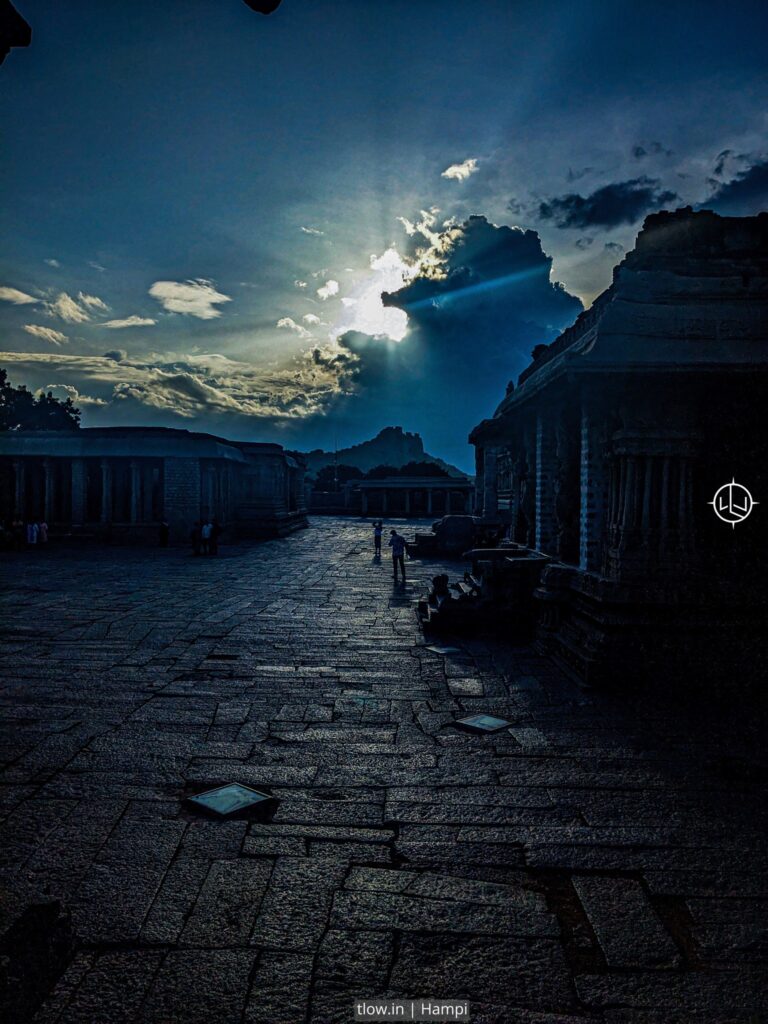
The temple is dedicated to Lord Vittala, an incarnation of Lord Vishnu. Lord Vittala is often depicted as standing with his arms crossed and playing the divine musical instrument known as the celestial flute.
3. Architecture and Design:
The Vittala Temple is renowned for its exceptional architectural beauty and intricate carvings. It exhibits the characteristic Vijayanagara style of temple architecture. The main shrine of the temple is surrounded by several mandapas (halls) and structures, including the famous Stone Chariot.
4. Musical Pillars:
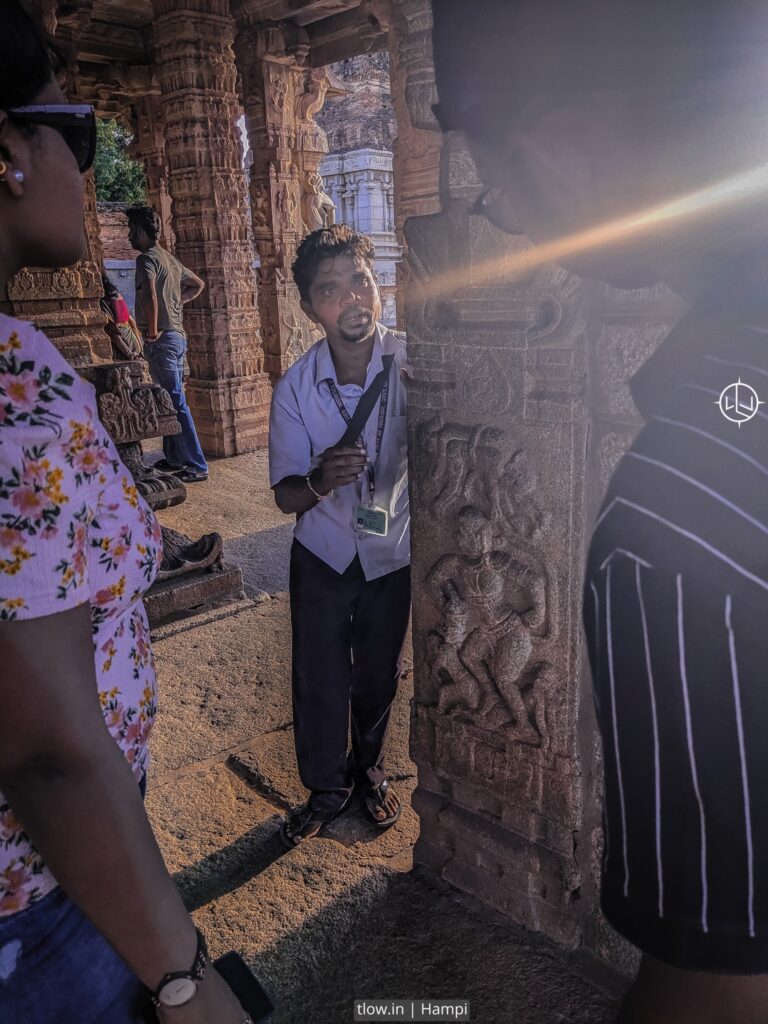
One of the most fascinating features of the Vittala Temple is its musical pillars. These pillars are carved with columns that produce musical sounds when struck. Each pillar is said to represent different musical notes or instruments.
5. Importance and Significance:
The Vittala Temple was considered the most important and grandest temple in the Vijayanagara Empire. It served as the focus of religious and cultural activities during that era and was a major pilgrimage site.
6. Decline and Restoration:
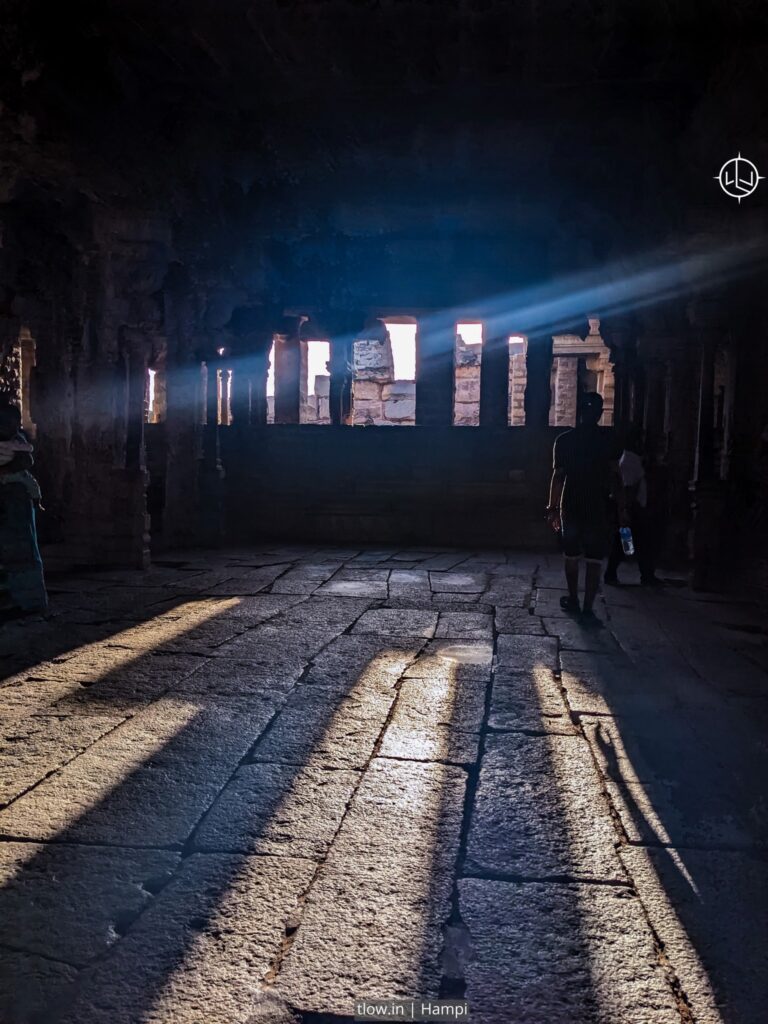
Like other monuments in Hampi, the Vittala Temple suffered from attacks and destruction during the downfall of the Vijayanagara Empire in the 16th century. It fell into ruins, and its splendor was buried under the sands of time. In recent years, efforts have been made to restore and preserve the temple’s glory, and it is now a popular tourist attraction.
7. UNESCO World Heritage Site:
In 1986, the Vittala Temple, along with other Hampi monuments, was inscribed as a UNESCO World Heritage Site. The temple’s historical and architectural significance contributed to its inclusion in this prestigious list.
Today, visitors to the Vittala Temple can marvel at its extraordinary architecture, explore the various halls and structures, witness the musical pillars, and enjoy the serenity of the temple complex. It stands as a testament to the grandeur of the Vijayanagara Empire and is a must-visit destination for history and architecture enthusiasts.











